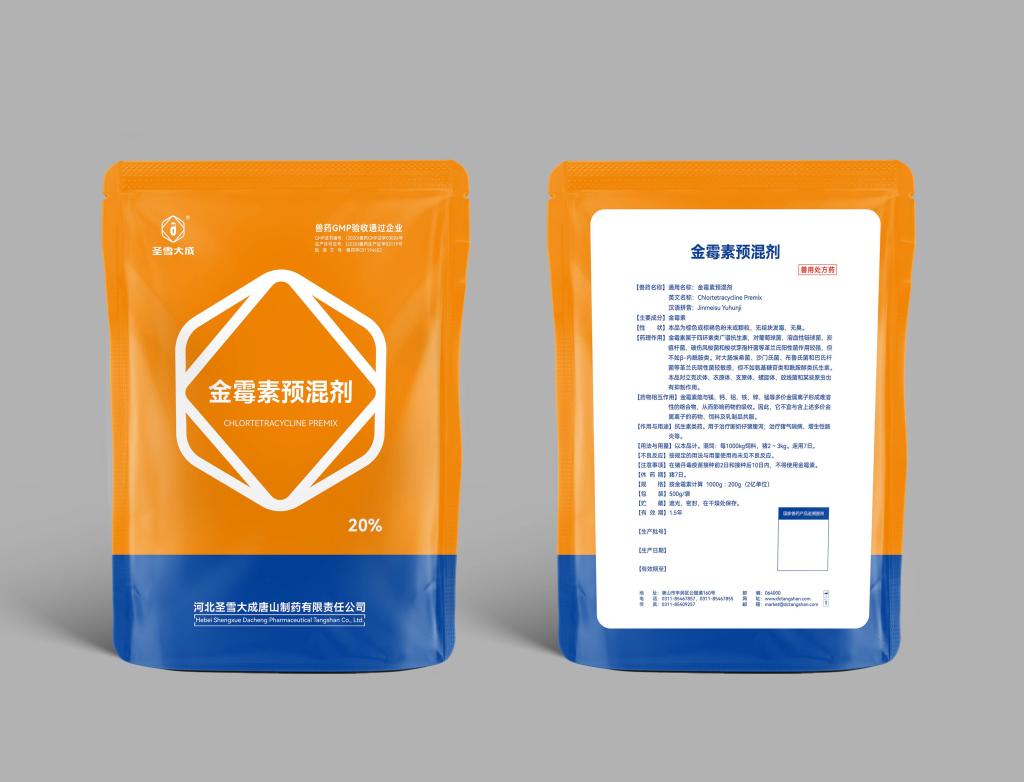Tel:0086 18231198596

News
Current Position:
Home >
News
>Exploring alternatives to Chlortetracycline Premix in animal agriculture.
Exploring alternatives to Chlortetracycline Premix in animal agriculture.
TIME:2024-05-30
The Challenge of Antimicrobial Resistance
Antimicrobial resistance (AMR) is a global health threat that arises when bacteria develop resistance to antimicrobial drugs, rendering them ineffective in treating infections. The overuse and misuse of antibiotics in animal agriculture contribute to the emergence and spread of AMR, posing risks to human health through the transmission of resistant bacteria from animals to humans via food, water, and the environment.
Chlortetracycline (CTC) is one of the antibiotics commonly used in animal agriculture for its broad-spectrum activity against a wide range of bacterial pathogens. However, prolonged and indiscriminate use of CTC can lead to the development of resistance among bacterial populations, compromising the effectiveness of this antibiotic in both veterinary and human medicine.
Alternatives to Chlortetracycline Premix
Given the concerns surrounding the use of CTC in animal agriculture, there is growing interest in exploring alternative strategies for disease prevention and treatment. Some of the potential alternatives to CTC premix include:
Probiotics and Prebiotics: Probiotics are beneficial microorganisms that can help maintain a healthy gut microbiota and enhance the immune response in animals. Prebiotics are non-digestible food ingredients that promote the growth of beneficial bacteria in the gut. By enhancing gut health and competitive exclusion of pathogens, probiotics and prebiotics can help reduce the incidence of bacterial infections in livestock without the use of antibiotics.
Phytogenic Feed Additives: Phytogenic feed additives, derived from plant extracts and essential oils, have been shown to possess antimicrobial, anti-inflammatory, and immunomodulatory properties. These natural compounds can be incorporated into animal feed to enhance performance, improve gut health, and mitigate the risk of bacterial infections in livestock.
Bacteriophages: Bacteriophages, or phages, are viruses that specifically target and infect bacterial cells. Phage therapy involves the use of bacteriophages to control bacterial infections in animals. By selectively targeting pathogenic bacteria, bacteriophages offer a targeted and environmentally friendly approach to disease control without affecting beneficial bacteria or promoting AMR.
Immunomodulators: Immunomodulators are substances that modulate the immune response in animals, enhancing their ability to fight off infections. These may include immune stimulants, such as beta-glucans, mannans, and nucleotides, which can boost the immune system and improve disease resistance in livestock.
Vaccines: Vaccines are an essential tool for disease prevention in animal agriculture. By stimulating the immune system to produce protective antibodies against specific pathogens, vaccines can effectively reduce the incidence and severity of infectious diseases in livestock. Development of novel vaccines targeting prevalent bacterial pathogens can help reduce the reliance on antibiotics for disease control.
Alternative Antibiotics: Some antibiotics, such as bacitracin, virginiamycin, and narasin, have been approved for use in animal agriculture as alternatives to CTC. These antibiotics may have different mechanisms of action and resistance profiles compared to CTC, offering options for disease control while minimizing the risk of AMR.
Benefits and Limitations of Alternatives
While alternatives to CTC premix offer potential benefits for disease prevention and treatment in animal agriculture, they also have certain limitations that need to be considered:
Effectiveness: The efficacy of alternative strategies may vary depending on factors such as the type of infection, bacterial species involved, and environmental conditions. Some alternatives may be more effective against certain pathogens or in specific animal species than others.
Cost and Availability: The cost of alternative strategies, including probiotics, phytogenic feed additives, and vaccines, may be higher than that of CTC premix. Additionally, availability and accessibility of these alternatives may vary depending on regional regulations and market availability.
Regulatory Approval: Regulatory approval for alternative strategies may be required before they can be used in animal agriculture. This process involves demonstrating safety, efficacy, and quality assurance through rigorous testing and evaluation, which can be time-consuming and resource-intensive.
Resistance Development: There is a risk that bacteria may develop resistance to alternative strategies over time, similar to the development of resistance to antibiotics. Monitoring and surveillance programs are needed to assess the emergence of resistance and mitigate its spread.
Integration with Existing Practices: Integrating alternative strategies into existing animal husbandry practices may require adjustments to feeding regimens, management protocols, and biosecurity measures. Education and training of farmers and veterinarians are essential for successful implementation.
Conclusion
The use of chlortetracycline (CTC) premix in animal agriculture presents challenges related to antimicrobial resistance (AMR) and human health concerns. Exploring alternatives to CTC premix offers opportunities for disease prevention and treatment in livestock while minimizing the risk of AMR. Probiotics, prebiotics, phytogenic feed additives, bacteriophages, immunomodulators, vaccines, and alternative antibiotics are among the potential alternatives that can be considered.
Each alternative strategy has its own set of benefits and limitations, and their effectiveness may vary depending on factors such as the type of infection, bacterial species involved, and environmental conditions. Regulatory approval, cost, availability, resistance development, and integration with existing practices are important considerations when evaluating alternative strategies for disease control in animal agriculture.
By exploring and implementing alternative approaches to disease prevention and treatment, stakeholders in the animal agriculture industry can contribute to the responsible use of antibiotics, mitigate the spread of antimicrobial resistance, and safeguard animal and human health. Collaboration among researchers, veterinarians, farmers, policymakers, and industry stakeholders is essential for promoting sustainable and resilient animal production systems.

 CONTACT
CONTACT




